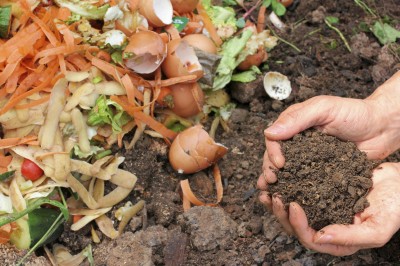






Are you new to composting? If so, you’re probably wondering about how to start compost for gardens. No problem. This article will help with simple instructions for starting a compost pile. Composting for beginners has never been easier.
There are a number of ways to compost, but on average, compost can be created using five methods:
The focus of this article will be heap composting for beginners, as this is the easiest and least expensive method for most people.
With heap composting, there are no structures required, though you may use a compost bin if desired. Keep in mind that a compost heap or pile may not appear as neat and tidy as using a bin, but it is still one of the best options for newbies. You can also camouflage a compost pile with tall flowering plants or fencing.
You can start a compost pile any time of the year, but fall is the time of year when both nitrogen and carbon materials are readily available.
Starting a compost pile requires a few simple steps: creating the compost heap, adding organic materials, and watering and turning the compost as necessary.
Location – One of the most important factors for starting a compost pile is its location. Choose an open, level area with good drainage. You do not want your compost to sit in standing water. An area with partial sun or shade is also ideal. Too much sun can dry the pile out, while too much shade can keep it overly wet. Finally, choose a site that is easy for you to get to and avoid areas near dogs or other meat-eating animals.
Size – The recommended size for a compost pile is generally no smaller than 3 feet high and wide and no larger than 5 feet. Anything smaller may not heat up efficiently and anything larger may hold too much water and become difficult to turn. It is recommended to start your pile on bare ground rather than on asphalt or concrete. This impedes aeration and inhibits microbes. Placing a pallet underneath the pile is fine, however, if you prefer.
Many organic materials can be composted, but there are some items that you should keep out of your compost pile. These include:
The key materials for composting are nitrogen/greens and carbon/browns. When starting a compost pile, the recommended practice is to layer or alternate these greens and browns, the same way as you would for making lasagna.
Your compost pile should be moist, but not soggy. Most of your water will come from rain, as well as the moisture in green materials, but you may need to water the pile yourself on occasion. If the pile gets too wet, you can turn it more frequently to dry it, or add more brown materials to soak up excess moisture.
Once you turn the pile the first time, these materials will get mixed together and compost more efficiently. Keeping the compost pile turned on a frequent basis will help with aeration and speed up decomposition.
Using these simple instructions for composting, you will be well on your way to creating the ideal compost for your garden.
Copyright © www.100flowers.win Botanic Garden All Rights Reserved